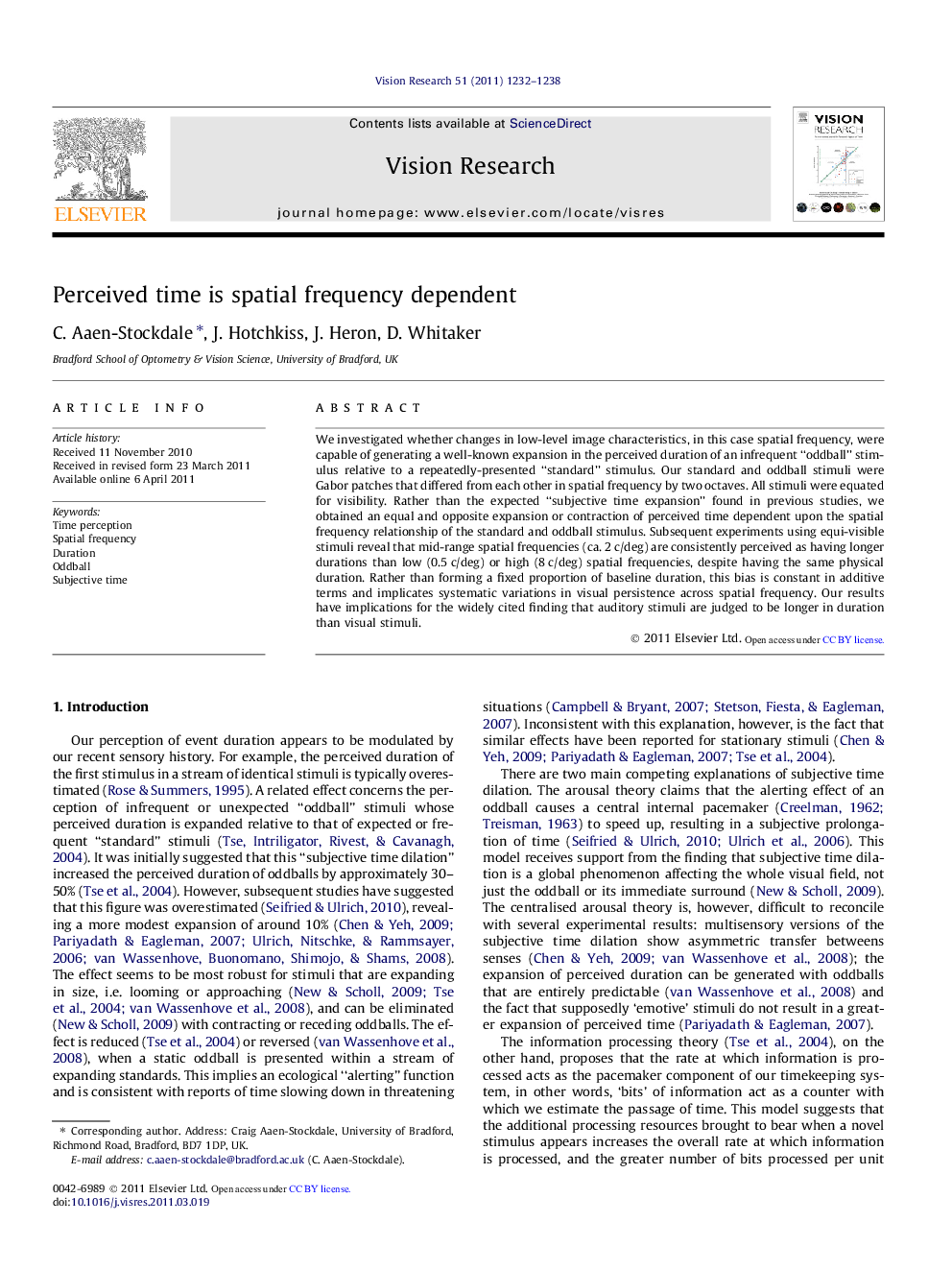| Article ID | Journal | Published Year | Pages | File Type |
|---|---|---|---|---|
| 6203787 | Vision Research | 2011 | 7 Pages |
We investigated whether changes in low-level image characteristics, in this case spatial frequency, were capable of generating a well-known expansion in the perceived duration of an infrequent “oddball” stimulus relative to a repeatedly-presented “standard” stimulus. Our standard and oddball stimuli were Gabor patches that differed from each other in spatial frequency by two octaves. All stimuli were equated for visibility. Rather than the expected “subjective time expansion” found in previous studies, we obtained an equal and opposite expansion or contraction of perceived time dependent upon the spatial frequency relationship of the standard and oddball stimulus. Subsequent experiments using equi-visible stimuli reveal that mid-range spatial frequencies (ca. 2Â c/deg) are consistently perceived as having longer durations than low (0.5Â c/deg) or high (8Â c/deg) spatial frequencies, despite having the same physical duration. Rather than forming a fixed proportion of baseline duration, this bias is constant in additive terms and implicates systematic variations in visual persistence across spatial frequency. Our results have implications for the widely cited finding that auditory stimuli are judged to be longer in duration than visual stimuli.
⺠The perceived duration of visual stimuli varies with spatial frequency content. ⺠Subjective time expansion in response to oddball stimuli is not a general result. ⺠Sounds being perceived as longer than visual stimuli is not a general result.
